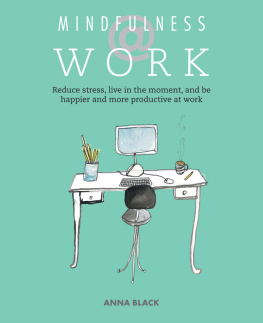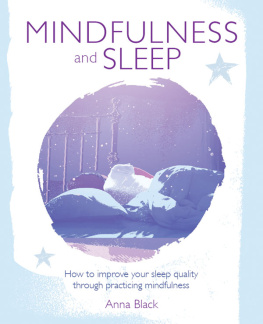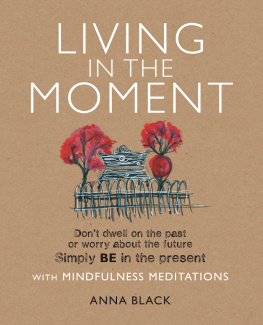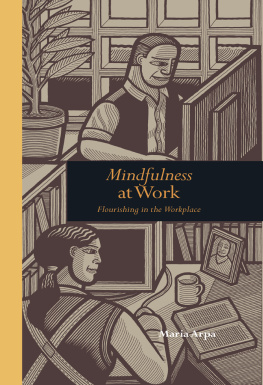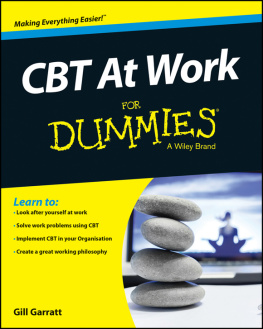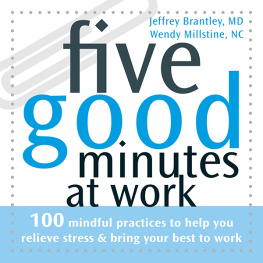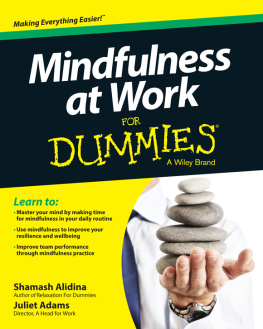MINDFULNESS
@
WORK


MINDFULNESS
@
WORK
Reduce stress, live in the moment, and be happier and more productive at work
ANNA BLACK


For Catherine, with thanks for your continuing friendship, wisdom, and support.
Published in 2014 by CICO Books
An imprint of Ryland Peters & Small Ltd
2021 Jockey's Fields 519 Broadway, 5th Floor
London WC1R 4BW New York, NY 10012
www.rylandpeters.com
10 9 8 7 6 5 4 3 2 1
Text Anna Black 2014
Design and illustration CICO Books 2014
The author's moral rights have been asserted. All rights reserved. No part of this publication may be reproduced, stored in a retrieval system, or transmitted in any form or by any means, electronic, mechanical, photocopying, or otherwise, without the prior permission of the publisher.
A CIP catalog record for this book is available from the Library of Congress and the British Library.
eISBN: 978 1 78249 515 4
ISBN: 978 1 78249 169 9
Printed in China
Editor: Jennifer Jahn
Designer: Manisha Patel
Illustrator: Amy Louise Evans
For digital editions, visit www.cicobooks.com/apps.php
CONTENTS


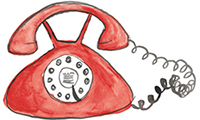
People often think meditation is not possible for them, however, mindfulness is accessible to every single one of us and chances are that you have already experienced being fully present in the moment at some point in time. Practicing mindfulness meditation is about learning how to do this intentionallyand reaping the myriad benefits.

I discovered mindfulness at a time when I was experiencing chronic stress, a good part of which was generated by work. A promotion had led to greater responsibility that, although initially exciting, became increasingly stressful as staff cuts meant that everyone was asked to do much more. A change in management caused new procedures to be implemented, and while they might have been good for the overall benefit of the company, they were less helpful for those of us who were expected to deliver them. Everyday tasks felt increasingly difficult. The more stressed we became, the more short-tempered and demanding we all grew to be; work became a place to be endured.
I was aware of the long-term health consequences of stress so I wanted to find a way to manage it. I had flirted with meditation at a local Buddhist group but I didnt want to be part of an order. I struggled with the practicalities of meditatingsitting crosslegged in lotus position was beyond me and I didnt understand what I was supposed to be doing when a teacher said to watch my mind. I had no idea how to do that so I decided that meditation must only work for certain people, and my mind must just be too busy (we always think we are special!).

By chance I stumbled across Jon Kabat-Zinns Full Catastrophe Living, and this was how I first came across the term mindfulness meditation. Reading Full Catastrophe Living made me realize that it was possible to establish a meditation practice outside of a spiritual framework, and I became aware of the myriad health benefits of meditation. As I began practicing mindfulness meditation, I discovered how small changes led to bigger shifts and that, if I let go of having a particular outcome in mind and instead trusted in the process, all kinds of unforeseen possibilities could emerge.
Learning to Meditate
I discovered that there was more than one way to sit while meditating and that our posture is simply a means to an end. Gradually I learned that meditation was not about stopping to think or about emptying the mind, but allowing ones thoughts to come and go without obsessing about them. I learned that my mind would always wander and that it was repeatedly bringing back my attention to a point of focus that was important. Over time I was able to sit still for longer periods of time. I also realized that it was not so much the length of time that was important, but rather the regularity and quality of my attention; a little and often was better than an hour once a month. I practiced tuning into my bodya place that had become unfamiliar to me over the yearsand I started to notice how my body was constantly giving me accurate feedback about how I really felt. I became aware of how I would go into a meeting at work in a positive mood and how, within the space of an hour, my energy levels would plummet, my posture would change, and my neck and shoulders would become tight and stiff. I could see a direct relationship between my environment and my physical and emotional well-being.

I had assumed that a promotion was a positive thingafter all arent we all looking for more money and greater responsibilities? Through mindfulness I learned to distinguish between what I thought was right and what I really felt and wanted at a visceral level. I realized that perhaps the responsibilities that came with the new role werent for me as they took me further away from what I loved best about my job. When I was growing up, I had a reputation for indecisiveness. Through mindfulness and meditation Ive developed trust and confidence in myself and the decisions I makeand this has been life-changing.
Accepting Our True Feelings
Acknowledging how we really feel, rather than how we think we should feel, is an important element of mindfulness practice. Accepting all aspects of ourselveseven the parts that we dont like or think are inappropriatemeans that we are in a much stronger position to make informed decisions. We can only decide where we want to go once we have an accurate understanding of where we are right now. My mindfulness practice has taught me that nothing stays the sameI still get stressed but now I am able to recognize and so take wise action to manage it.

In my experience, practicing mindfulness at work is challenging as the workplace is often very cerebralit is where we solve problems and fix things. The workplace is driven by goals and we have professional expectations (and people have them of us). When we feel hijacked by our emotions at work we often suppress them and distract ourselves with unhelpful strategies such as over-working, eating too much or not enough, drinking too much, or taking drugs. Or we may blow a fuse from time to time, which can create a climate of fear and uncertainty with our colleagues. We often try and apply our problem-solving skills to emotional challenges that arise but discover that what might work operationally can actually work against us emotionally, and we get caught up in unhelpful cycles of repetitive thinking or rumination.

